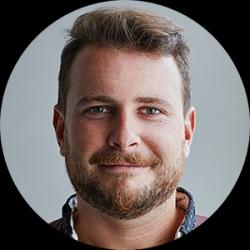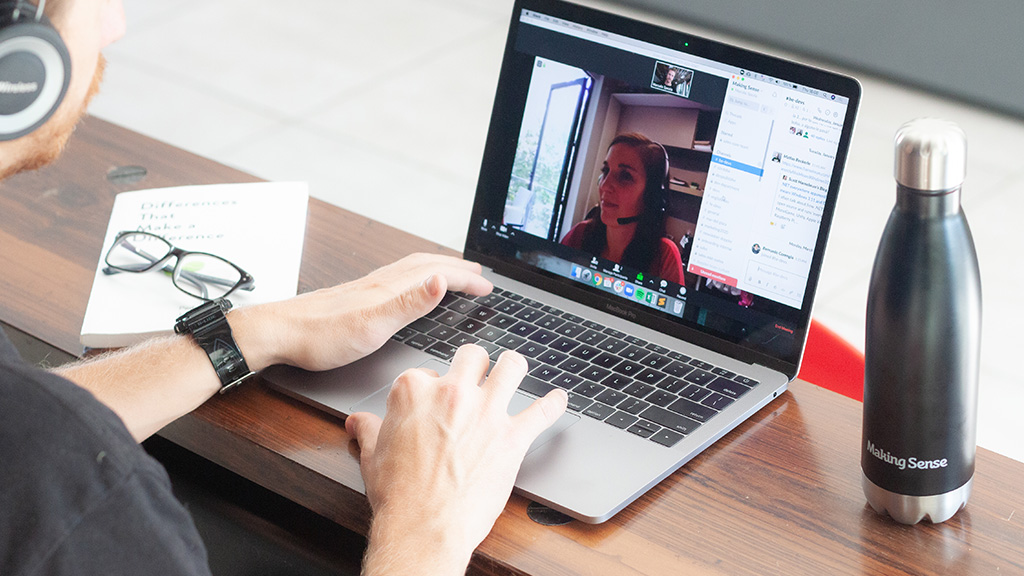When it comes to developing products, the fundamental first step is to deeply understand the motivations behind the idea. Like other things in life, for instance, when I plan a vacation, I wonder why I’m planning to travel. Would I prefer to relax or to have an adventure? Do I need a long holiday or just a few days to clear my mind?
At work, similar questions come up. Why do I have this role? What is the value that I bring to the team? Is it aligned with Why I’m working here? If you understand your core motivations and purposes, then your decision-making process becomes much easier and cohesive. Understanding what to do at work and how to do your job becomes more intuitive and natural, and traveling becomes more meaningful and effective.
When we face a new idea, we apply this fundamental view because at Making Sense we truly believe that defining Why we do things is the guiding principle for a successful partnership, and therefore a successful product. Defining and designing What to build and How to build it becomes fluent and organic afterward.
During our discovery process, we ignite conversations in several workshops to understand Why, to then define What and How. Because of the importance of these conversations, we are used to traveling on-site, getting together in the same room, and creating. Our latest discovery came along differently though, due to the current situation we’re all aware of.
In this blog post, I’d like to take you through how we adapted the experience of transforming an idea into a project using a fully remote method.
Feeling comfy? Good. We’re about to make meaningful bonds.
Our latest discovery process came with a special ingredient: doing it fully remote. So we buckled up to face our first goal: how to create the same immersive and creative experience with all of us behind a webcam.
As usual, we started by understanding Why we usually like to be on-site. What is its value? Some keywords immediately came up, such as collaboration, focus, empathy, and happy hours. :P These words led us to envision a way to replicate such things by tweaking some processes and incorporating some tools. But how exactly?
Well, suppose you take other things in life as an example, i.e. when you celebrate your birthday with your family. In that case, you usually get together, chat, have something to eat and drink, and enjoy a cake (aside from the presents :D ). But when you live abroad, and you want to do this, it may sound difficult to do. If you think about it, it’s only really impossible to get together in the same room, but the rest is still doable, right? You can still have a chat with your family through Zoom, you can send them something to eat and drink during the video call, and you can have your small cake ready for the special final moment. You can even send them balloons and have your own to create some ambiance.
It won’t be a full-blown party, but while it will be different, it can still be memorable and enjoyable. That’s what it’s all about, right? The whole family will make fun when grandma doesn’t understand Zoom (and complains a lot about it) and everybody will enjoy a well-guided tour of your cousin’s new apartment furniture.
When it comes to our discovery process, the key was replicating these concepts of collaboration, focus, and empathy while making the process meaningful and effective. Let me tell you how we did it.
Fostering collaboration
The discovery phase starts by getting together a team willing to listen, understand and create, with another team focused on vision, goals, motivations and needs. This interaction usually happens in an empty, white-walled room that is our canvas. We run the entire process in this same room, using sticky notes, papers and markers to annotate things. Throughout this process, the whole team can see how we add annotations everywhere, and then how we turn those annotations into artifacts, such as personas, journeys, business models, or architecture diagrams.
Making it collaborative is key for us. At Making Sense we don’t visualize a team building a product for you. Instead, we see us building it together. So we wondered how to replicate this experience of collaborative construction, since being in the same room for a few weeks was a big part of it before. The solution was to create a toolkit to make it happen:
- We made the most out of Zoom. Besides popular functionalities like video, chat and share screen, we also used annotations that allowed people to draw over another person’s screen. On-site, the sessions are very dynamic and people usually have side conversations while enjoying a coffee or during a break. Those moments are important for the creative process too, so we used the Breakout Room feature to split the meeting into smaller and more intimate conversations when needed.
- We replicated the empty meeting room through Miro. The sense of continuous collaborative creation is important, so we needed a whiteboard where the whole team could work together in real-time and create. Miro did an excellent job giving us tools like sticky notes, arrows, highlights and images within the same place and editable for everybody. We managed the whole process in the same Miro Board that started empty (just like the room on-site) and this turned out to be very interesting.
- We also supported Miro with Invision, which allowed us to create prototypes to discuss quickly. Besides that, we also used the free-hand functionality that put all of us on the same “virtual” piece of paper in real-time. This enabled people to express themselves graphically which usually happens with paper and pencil when we’re on-site.
Shaping focus
The thing about having everybody in the same room is that no one is in front of a laptop, or using the phone (or we try not to), which makes it much easier to keep everybody’s attention on what’s at hand. Well, that’s not the case when we’re working through Zoom and it’s much more difficult to pay full attention when you have your Slack red indicator pointing out that you have 20+ unread messages, or all the email notifications coming in like crazy.
So the question was, what can we do to reduce the amount of stimulus we all experience during each session? For that, we created a set of best practices to get it done:
- Short sessions with good break times. We adapted the sessions to be shorter than usual, which allowed us to reduce the amount of time we were focused. It also gave us some time between sessions to attend to other matters.
- It’s obvious when you’re multitasking. From day 1, we proposed to turn cameras on for every session, because the process is creative and there’s going to be back and forth. It’s better to have these conversations when we can see each other. Behind the scenes, we also knew that watching other people’s faces makes you more connected to what’s going on on-screen.
- Use the whole canvas! Another idea was to push people to turn off notifications and go full screen, whether on the Zoom call or the Miro board. This way, you clean up your point of view, just keeping visible what’s most important at that moment.
Driving empathy
We’ll end up spending hours together building your idea, so it’s important for us to know who we’re working with. By doing so, we can better understand things like what to celebrate, how to discuss items, when to be funny and how we can help. Simply said, it enables us to put ourselves in your shoes, so we can help leverage your decision-making throughout the process.
Once again we concerned ourselves with the question: Why is empathy so important? We know that looking through your eyes is the best way to navigate the journey because, at the end of the day, we’re creating together. Creating is emotional and it’s not just about the user, the business goal, or the marketplace. It’s also about you and me, the team, and how each of us sees things and thinks.
For on-site Discovery, this happens naturally during a coffee break, or while going out to dinner. Because of the remote scenario, we knew there wouldn’t be coffee breaks, so how could we reflect this experience? Aside from having our webcams turned on, we spent the right amount of time getting to know each other at the beginning of each session. Conversations came up naturally about sports, life moments, personal projects and vacations. We even leveraged different time zones by dropping some local news from time to time.
By the end of the first week of understanding, we were in sync, connected, doing more and talking less, which put us in a very good mood to spark the creation process toward the end of the process.
Conclusion
As we all know, these times are pushing us to rethink the way we usually do certain things, both personally and professionally. To be ready to pivot, to be resilient and adapt, I believe you have to understand why you do things. Understanding reveals how to do everything easier, and for us, this was key introspective validation about why we discover.
Within a couple of weeks, we adapted the process into something that just worked and in turn, it became a healthy ongoing project. Now we know that when we say we’re adaptive, we mean it.


